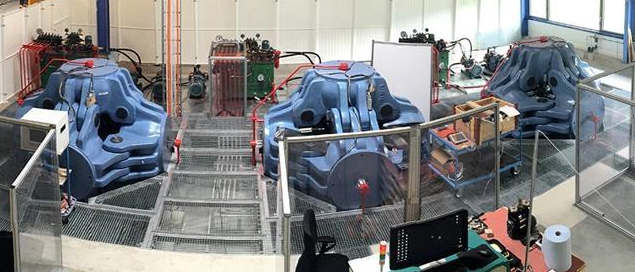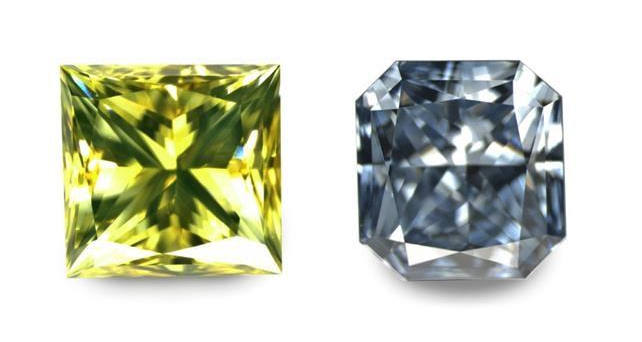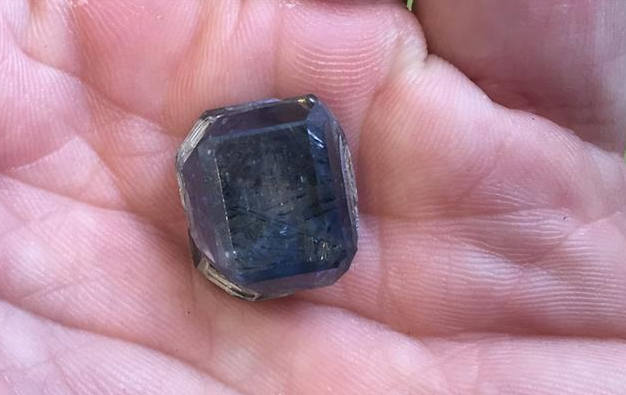
Synthetic diamonds have a long history. The first HPHT diamond was synthesized by ASEA in Sweden in 1953; the first CVD diamond was synthesized by William Iverso, a scientist at Union Carbide in the United States, in 1952.
The two processes are as follows: one method is known as HPHT synthesis, in which high pressure and high temperature (HPHT) conditions (1,300-1,800°C) The diamond is "grown" from graphite in a special HPHT press, while the CVD synthesis method is performed under vacuum and at relatively low temperatures (700-1,000°C). -1,000°C) to "grow" diamonds from the gas phase, usually methane.
Considering that both processes are well established, what has made the existence of synthetic diamonds a problem for the jewelry and gemstone industry only in recent years? It is due to misinterpretation of this synthetic material? Why did it take until 2015 for synthetic diamonds to gain some attention and recognition?

▲ Three improved Chinese Cubic Anvil Press lab grown diamonds
Gem-quality synthetic diamonds have been available since the 1970s, yet they only became commercially available in the late 1980s.
Yellow and blue HPHT diamonds are far less expensive than natural (untreated) diamonds of the same color, while near colorless to colorless synthetic diamonds are more expensive than natural diamonds. The difference in price is due to the difficulty of producing colorless synthetic diamonds, where most of the material turns yellow and are included.
Until 2003, all gem-quality synthetic diamonds were produced through the HPHT process, after which Apollo Diamonds USA announced that it had successfully grown gem-quality diamonds through the CVD process successfully grew gem-quality single crystals.
This process, which allowed for the direct production of colorless diamonds, was a milestone at the time, and thus 2003 was the beginning of the rise of lab diamonds. Even so, it took nine years for CVD synthetic diamonds to become commercially available
In 2010, Gemesis - a company that had been producing and commercializing colored HPHT diamonds until then - began producing CVD diamonds on a large scale. stones. Thus, it was only in 2012 that CVD diamonds became truly commercialized through Gemesis, and through other companies such as Scio (which acquired Apollo Diamonds). has acquired Apollo Diamonds), Orion and Soni, on a smaller scale. However, compared to natural diamonds, overall production still dwarfs that of natural diamonds.

▲ Two typical colored HPHT synthetic diamonds as they have been commercially available since the late 1980s. On the left is a high-temperature annealed yellow On the left is a high-temperature annealed yellow synthetic diamond, and on the right is a completed Type IIb blue synthetic diamond. Photo credit: Dr. Thomas Hainschwang
At the same time, the HPHT process still does not produce colorless diamonds at a lower price than natural diamonds; except for experimental diamonds, most of which are produced in the Ukraine, only one company, A. Hainschwang, has been able to produce a diamond at a lower price. Only one company - AOTC - has attempted to commercialize colorless HPHT synthetic diamonds, in addition to the majority of experimental diamonds produced in Ukraine.
Since the market share of colored diamonds is insignificant compared to the market share of colorless (white) diamonds, even with the availability of technically sophisticated colored synthetic diamonds, such as yellow and blue diamonds, and the availability of a wide range of synthetic diamonds, the market share of colorless (white) diamonds is very low. diamonds, such as yellow and blue, and at prices much lower than those of natural diamonds, it was not possible to develop a significant market share.
Given the circumstances, the key to advancing the commercialization of lab grown diamonds was to address the technology for HPHT synthetic white diamonds. So in 2013 and 2014, the Russian company New Diamond Technology produced for the first time large, perfectly colorless and flawless HPHT synthetic diamonds.
New Diamond Technology was able to achieve this goal because, in addition to technological improvements, it was important to use a Chinese-designed six-sided top press. After this, synthetic diamonds began to become a real and visible problem in the natural diamond market.
Today, there are many synthetic diamond manufacturers targeting the global gemstone market, producing large quantities of CVD and HPHT diamonds at significantly lower prices than comparable natural diamonds. Most of the production facilities are located in China and India.

▲ A 25-carat blue HPHT diamond, synthesized by Andrei Katrusha at New Diamond Technology in 2015/16. Photo Photo credit: Dr. Thomas Hainschwang
With the commercialization of synthetic diamonds, confusion with natural diamonds is inevitable in circulation. Larger solitaire diamonds, being easily identifiable and generally authenticated, they are not yet a problem for the natural diamond market. However, contamination of synthetic melee diamonds (up to 0.2 carats) in 2015 became a major and recognized problem, even more so for colored melee diamonds.
Almost all yellow melee diamonds in parcels tested by the authors since 2010 contained HPHT synthetic diamonds. In addition, since 2019 onwards, most parcels of brown melee diamonds contain CVD synthetic diamonds, and since 2020, gray and pepper diamonds tend to contain both HPHT and CVD diamonds.
Interestingly, many dealers of colored melee diamonds, and even some very prominent jewelers who use a lot of colored melee diamonds, ignore these facts, claiming that "they know their suppliers".
However this claim is risky, because in the current market, unless 100% of the stones are certified by an authoritative appraisal body There are almost no guaranteed clean parcels of colored melee diamonds on the market today.













